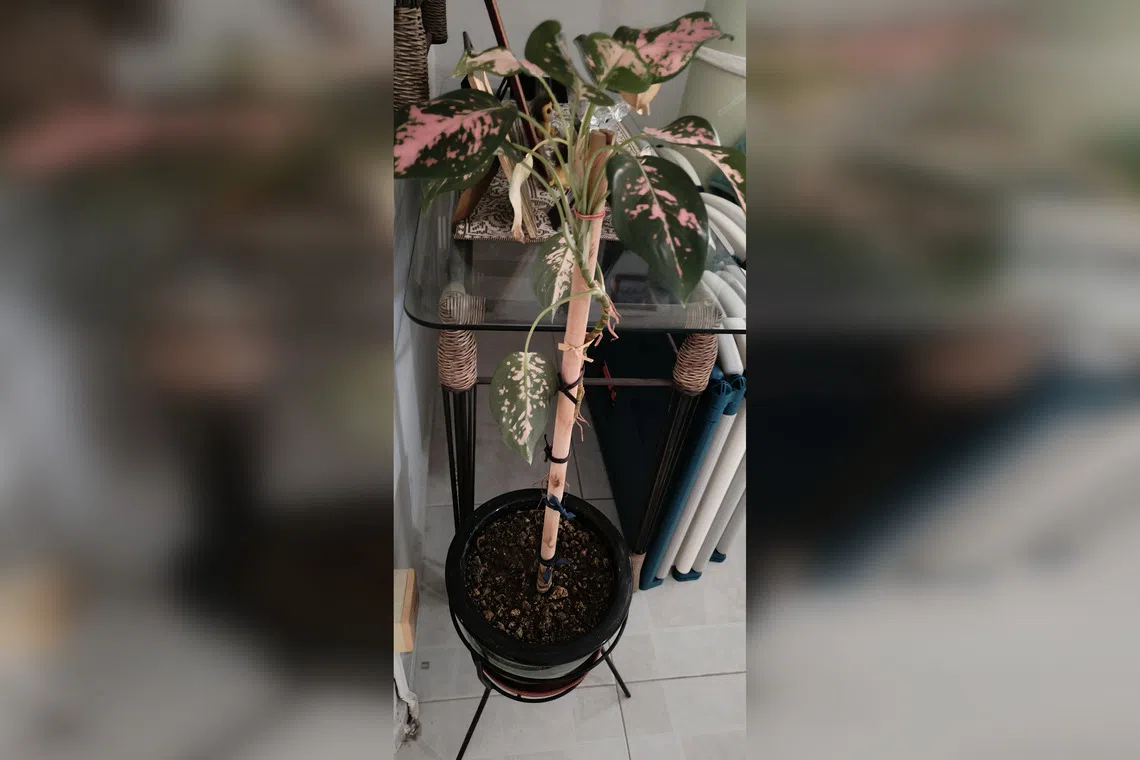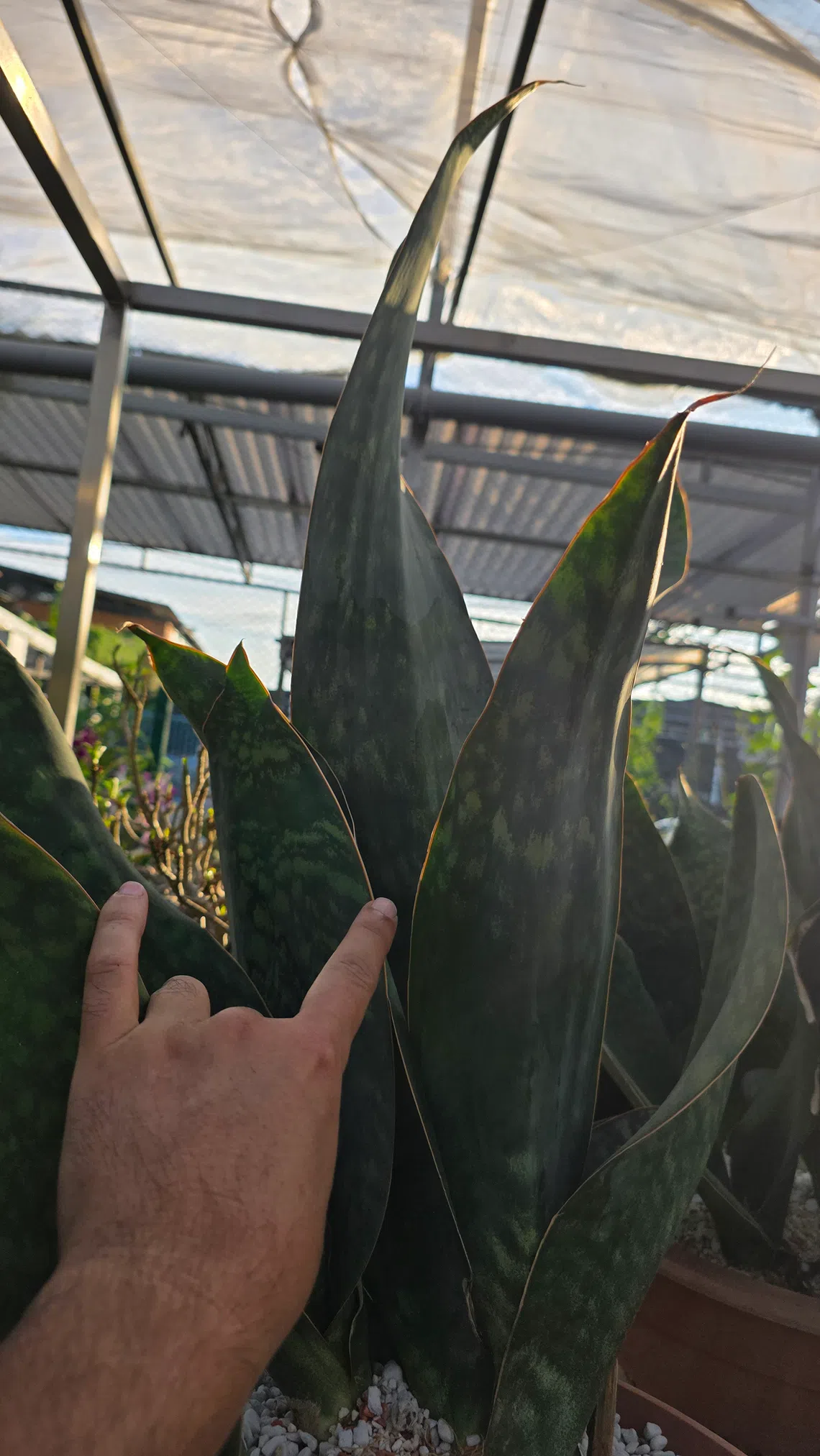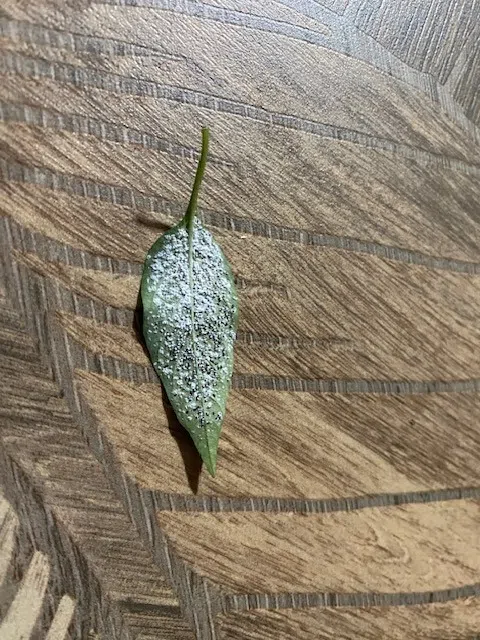Root Awakening
Aglaonema can be pruned and propagated
Sign up now: Get ST's newsletters delivered to your inbox

This is an older plant that can be propagated by stem-cutting.
PHOTO: JACQUELINE VASUKY
Wilson Wong
Follow topic:
My plant was healthy but has not been growing well lately. What is wrong?
Jacqueline Vasuky
You have an Aglaonema hybrid with colourful leaves, but it is getting old. You can prune the top of the plant along the stem that has some roots growing from it, and plant the stem-cutting into a new pot of soil.
Keep this newly propagated plant in a cool but bright area, and consider putting a clear plastic bag over it to reduce stress from moisture loss. You can make holes in the plastic bag by cutting two corners. This will keep the growing mix moist but not wet. Remove the bag after the cutting has produced enough roots.
New growth may be produced at the stump. Allow it to grow, and you can take stem-cuttings to yield new plants.
This Aglaonema hybrid needs good filtered sunlight for a more compact growth habit. Low light can cause the plant to etiolate and take on an unsightly, lanky appearance.
Gardenia species grows into a tree

This gardenia species is native to Singapore.
PHOTO: ESTHER LEONG
May I know the name of this plant?
Esther Leong
This is the Water Gardenia or Golden Gardenia (Gardenia tubifera). It is a native species of gardenia that will grow into a tree, unlike the more common ones that grow as shrubs.
Whale Fin Sansevieria can grow around 60cm tall

The Whale Fin Sansevieria can be propagated by division.
PHOTO: ADRIAN LING
How do I propagate this plant? It is currently about 60cm. What is the usual height of this plant?
Adrian Ling
The easiest way to propagate the Whale Fin Sansevieria (Dracaena masoniana) is to wait for pups to emerge from the base of the plant, which can then be divided and planted separately. Although most species of this genus can be propagated via leaf-cutting, this method is much slower and plants take more time to grow.
A mature plant grown under direct sunlight will reach about 60cm in height. Your plant looks healthy with firm leaves, as expected of plants grown under optimal conditions. Under low light, leaves become longer and more floppy.
Curling chilli leaves may be due to a number of reasons

The plant’s leaves could be curling due to waterlogging or a pest infestation.
PHOTO: SINDY ANG
Why are the leaves of my chilli plant “bumpy”? I water it on alternate days.
Sindy Ang
The curling of leaves can be difficult to diagnose.
Chilli plants grow best in well-draining soil that does not retain too much moisture. Check if the soil is wet beneath the surface and avoid watering if it is so. The plant needs good air circulation for proper leaf development.
Another cause could be a broad mite infestation. These microscopic pests feed on emerging leaf tissue, causing them to become distorted. Spray plants with dilute lime sulphur solution, focusing on the stem tips, at a cooler time of the day. New leaves should be less curly thereafter.
Finally, check for the presence of sap-sucking insects such as white flies, which chilli plants are prone to. These pests can spread incurable viral diseases which can cause the leaves to curl. Prevention is better than cure, so spray new plants with pesticide regularly.
Chilli leaves infested with sucking pests

Spray the plant with summer oil to suffocate the pests.
PHOTO: DANIELLE YEW
Almost all the leaves on my chilli plant have these white spots. What are they and how do I prevent them from growing?
Danielle Yew
Your chilli plant is heavily infested with white flies, a type of sap-sucking pest. It can be difficult to manage at this stage.
You may want to prune badly infested leaves and discard them. Spray your plant with summer oil to suffocate the pests, but do so during a cooler and shadier time of the day to avoid burning your plant. Thorough and repeated applications are necessary to provide adequate control.
Answers by Dr Wilson Wong, an NParks-certified practising horticulturist and parks manager. He is the founder of Green Culture Singapore and an adjunct assistant professor (Food Science & Technology) at the National University of Singapore.
Have a gardening query? E-mail it with clear, high-resolution pictures of at least 1MB, if any, and your full name to . We reserve the right to edit and reject questions.

